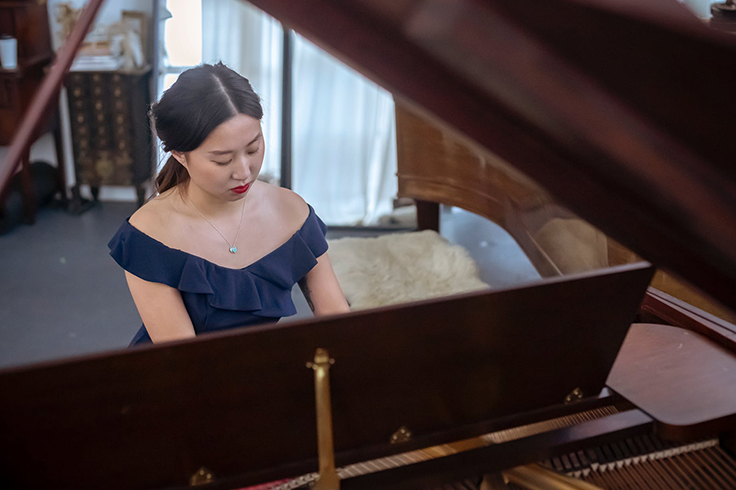- stradivaristringss
- Sep 15
- 6 min read
Learning the violin is an exciting journey, but it starts with one of the most important decisions—choosing the right instrument. For beginners, the violin is more than just a tool; it becomes a partner in growth, shaping how quickly and comfortably skills develop. The right violin can make practice feel enjoyable and rewarding, building confidence and inspiring daily progress.
On the other hand, a poorly chosen instrument may cause frustration, slow learning, and even discourage students from continuing. That’s why selecting a violin that feels comfortable, fits properly, and produces a pleasing sound is key to staying motivated. For new learners and their families, a trusted violin shop plays an invaluable role in this process.
With expert guidance, students can find the instrument that matches their needs, ensuring a strong foundation and a positive beginning to a lifelong musical journey.
Violin Sizes
Violin Size | Typical Age Range | Arm Length (approx.) | Notes & Comfort Considerations |
1/16 | 3–5 years | 14–15 inches | Very small size for youngest beginners. Helps maintain proper posture without strain. |
1/10 | 4–5 years | 15–16 inches | Slightly larger but still designed for very young children. |
1/8 | 5–6 years | 16–17 inches | Suitable for small children with growing reach. |
1/4 | 6–7 years | 17–18.5 inches | Common beginner size for children starting school. |
1/2 | 7–9 years | 18.5–20 inches | Allows better bowing control and comfortable fingering for older children. |
3/4 | 9–12 years | 20–22 inches | Ideal for pre-teens who are not yet ready for full size. |
4/4 (Full) | 12+ years | 22 inches or more | Standard size for teenagers and adults, providing full tonal range and projection. |
The Importance of Trying Before Buying
Starting your violin journey is an exciting adventure, but one of the first an most important steps is choosing the instrument that feels right for you. While it might be tempting to order a violin online, the truth is that every violin is unique. Each one has its own personality, with a distinct sound, weight, and feel. These small differences can have a big impact on how much you enjoy playing, which is why trying a violin before buying is such a crucial part of the process. It’s your chance to find an instrument that truly connects with you.

Discovering Your Perfect Match
When you visit a violin shop, you can play several instruments and discover what works best for your style and comfort. Pay attention to these key areas:
Unique Sound:
Listen closely to the tone of each violin. Some might sound bright and clear, while others produce a warmer, richer sound. There is no right or wrong answer here—it’s about finding the voice that you love and that inspires you to play.
Weight and Balance:
Hold each violin in the playing position. Notice how it feels on your shoulder. An instrument that feels well-balanced and not too heavy will be much more comfortable to play for longer periods, helping you build stamina without developing bad posture habits.
Feel and Response:
Pay attention to how the violin vibrates as you play. A responsive instrument will feel alive in your hands and make it easier to create the sounds you want. Check how your fingers feel on the fingerboard and how the bow glides across the strings.
Why Comfort is Key to Progress?
Finding a comfortable violin isn't just a luxury; it's essential for learning effectively and staying motivated. A great fit makes everything easier:
Encourages Good Posture:
A violin that rests naturally on your shoulder and is the correct size for your arm length helps you maintain a relaxed and proper playing posture from day one. This prevents physical strain and allows you to focus on your technique.
Smooth and Easy Playing:
When an instrument feels right, your fingers can move more freely and accurately on the fingerboard. Your bowing will also feel more controlled and fluid, making it easier to produce a beautiful, consistent tone without a struggle.
Boosts Motivation:
If your violin is uncomfortable or difficult to play, practice can feel like a chore. But when you find an instrument that feels good and sounds great, you’ll be excited to pick it up every day.
Remember, you aren’t just choosing a violin; you are choosing a partner for your musical journey. Taking the time to try different options ensures you find an instrument that inspires confidence, supports your growth, and makes every practice session rewarding. With the right violin in your hands, you’ll be well on your way to becoming the musician you want to be.

Essential Accessories to Get Along with the Violin
Having the right accessories is just as important as choosing your violin. These essentials make learning easier, protect your instrument, and help you play comfortably from the very start. Here’s how each accessory supports your musical journey:
Accessory | Role | How It Improves Experience? |
Bow | Needed to produce sound from the violin. | A quality bow makes it easier to control tone and dynamics. |
Strings | Create the vibrations that become music. | Good strings produce a better sound and are easier for beginners to play. Having spare strings prevents interruptions when a string breaks. |
Shoulder Rest | Supports the violin on your shoulder and improves posture. | Enhances comfort and reduces neck and shoulder strain, helping you play longer and build good technique. |
Case | Protects the violin and accessories from damage. | Keeps everything safe during practice, lessons, and travel. A reliable case is essential for both storage and transport. |
Rosin | Applied to the bow to create grip on the strings. | Without rosin, the bow won’t produce sound. The right rosin helps create a clear, enjoyable tone. |
Cleaning Cloth | Used to wipe rosin dust and fingerprints from the instrument. | Keeps your violin looking great, prevents buildup, and extends the life of your strings and varnish. |
Tuner | Helps keep your violin in tune. | Easy, accurate tuning is vital for beginners learning to develop their ear. |
Most violin shops offer complete beginner kits, which include these essential accessories. Starting with the right set ensures you have everything you need for a confident, enjoyable, and uninterrupted learning experience.
The Value of Expert Guidance
When choosing a violin, professional guidance makes all the difference between a frustrating purchase and a successful musical journey. A violin shop’s experts and luthiers bring years of experience to help students and parents navigate the complexities of violin selection, ensuring you make a choice that truly supports learning and growth.
Assess Your Specific Needs - They listen carefully to your goals, budget, skill level, and physical requirements to recommend instruments that match your situation perfectly
Ensure Proper Setup - Every violin needs professional adjustment of pegs, bridge, soundpost, and strings to make it comfortable to play and easy to tune. Without this setup, even a good violin can be incredibly frustrating for beginners
Demonstrate Sound Quality - Experienced players can reveal the true tonal potential of different violins by playing them for you, helping you hear qualities that a beginner might not yet be able to produce
Provide Honest Evaluations - They help you understand the real value and condition of instruments, steering you away from poor choices and toward violins that will serve you well
Expert Consultation - A Violin shop offer direct access to luthiers and experienced musicians who provide personalized recommendations based on your needs, while online retailers typically offer only product descriptions and customer reviews
Try Before You Buy - Physical shops let you hold, play, and compare multiple violins to find the best fit for comfort and sound, something impossible with online purchases
Professional Setup - Shop violins are properly set up by trained luthiers and ready to play, while online violins often arrive with factory setups that are difficult to play and tune
Immediate Problem-Solving - In-person experts in a violin shop can address concerns and make adjustments on the spot, while online purchases leave you to figure out problems on your own
Ongoing Maintenance and Repairs - From simple string changes to complex soundpost adjustments, shop luthiers keep your instrument in optimal condition throughout your musical journey
Trade-In and Upgrade Programs - Many shops offer credit programs that make it easier and more affordable to move up to larger sizes or higher quality instruments as students grow and advance
Trusted Long-Term Relationship - A violin shop becomes your reliable resource for future questions about accessories, repairs, or upgrades, supporting you as a musician for years to come

Your Musical Journey Starts with the Right Choice
Choosing your first violin is a defining moment in your musical education. A well-chosen instrument makes learning inspiring and natural, while the wrong one can lead to unnecessary frustration. A violin that is comfortable, correctly sized, and produces a sound you love will motivate you to practice and help you build a strong foundation for a lifetime of enjoyment.
So, how do you find that perfect instrument? Seeking expert guidance is the best path forward. For those in Singapore, Stradivari Strings offers a tailored experience for beginners, providing patient, knowledgeable advice without pressure. Their team focuses on finding an instrument that fits your unique needs and budget. By visiting a dedicated violin shop like Stradivari Strings, you not only get to try various instruments but also gain a long-term partner for maintenance, repairs, and future upgrades. Give yourself the advantage of starting with an instrument chosen with expert care.
Start Your Violin Journey the Right Way!











